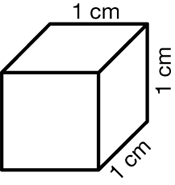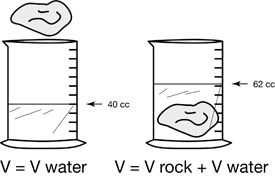Working in groups, students estimate the volume of small solid objects based on models they made from centimeter connecting cubes. Then they measure the actual volume of the objects by determining the amount of water displaced in a graduated cylinder when an object is placed in the cylinder. Students record the estimates and the actual volumes in a data table and analyze the data they collected.
Content in this Lesson
- Estimating volume by counting centimeter connecting cubes [E11].
- Using graduated cylinders to measure volume by displacement [E10].
Daily Practice and Problems EE–HH
Assessment in this Lesson
| Assessment | Expectation Assessed | Math Practices Expectation Assessed |
|---|---|---|
|
Yolanda Measures Volume by Displacement |
|
|
|
DPP Item EE |
|
















